Abstract
1. The mean velocities at which granulocytes roll along the walls of small venules have been related to their mean blood flow velocities in preparations of hamster cheek pouch and mouse mesentery. In animals anaesthetized with Nembutal, 30-200 μm venules were observed microscopically and the movement of rolling granulocytes quantitated on films. Apparent mean blood flow velocity was determined from films of embolizing platelet thrombi.
2. In four venules the velocity distribution of about 100 rolling cells was almost symmetrical about the mode, with a small proportion moving at up to three times the mode velocity. Therefore, the mean and mode velocities were very similar.
3. In two mesenteric and two cheek-pouch venules, blood flow velocity was temporarily altered during and after gentle compression with a fine glass fibre; this was associated with proportional changes in mean cell velocities.
4. In four different venules of a hamster cheek pouch, the mean velocity of rolling granulocytes increased in proportion to the mean blood flow velocity (r = 0·963).
5. In thirty-six venules of ten mouse mesenteries, the velocities were proportional (r = 0·915) between blood velocities of about 300 and 1000 μm/sec. Above this the velocity of the cells did not increase further.
6. The rolling of granulocytes is presumably governed by two forces, the shear force of the flowing blood and an adhesive force between the surfaces of granulocytes and vascular endothelium. Our results suggest that, within limits, the proportionality between the velocities of blood flow and rolling cells is due to shear force, the adhesive force being similar for all the cells. The results suggest that this adhesion force per granulocyte is of the order of 10-5 dynes.
Full text
PDF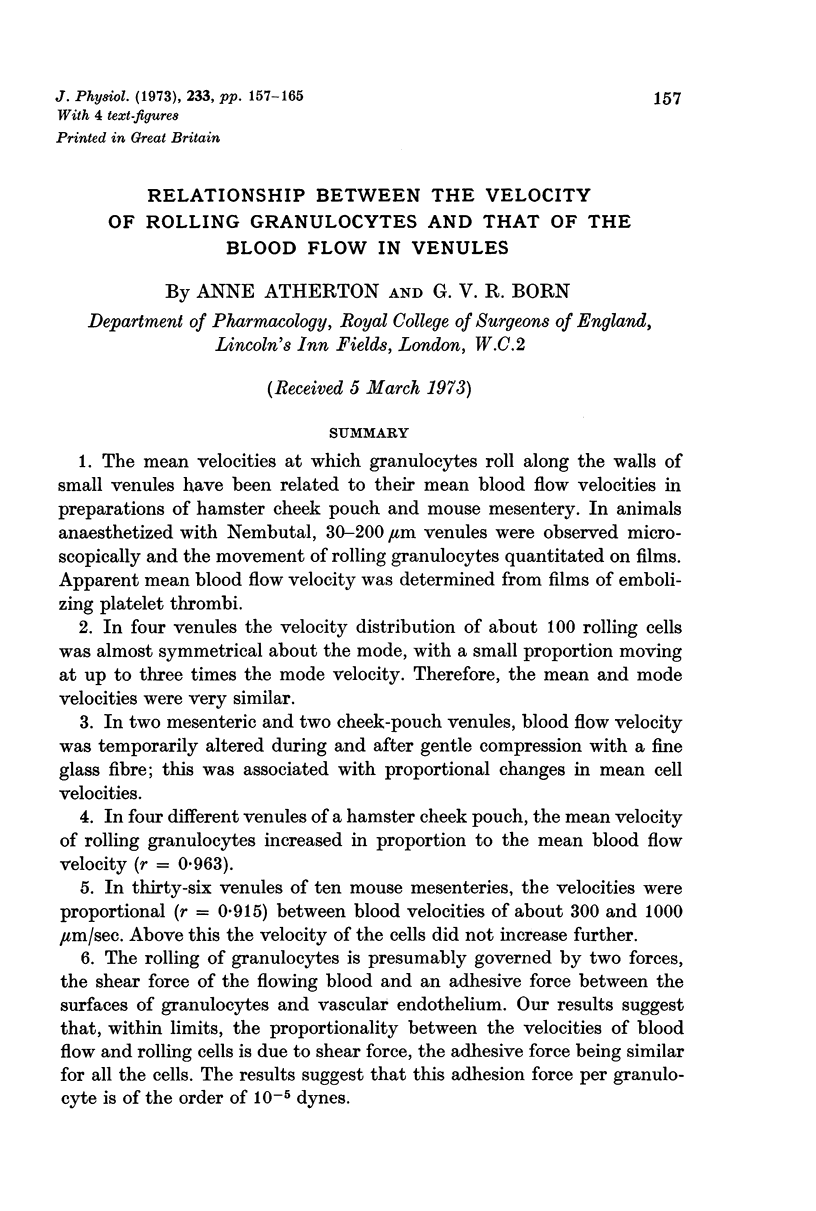
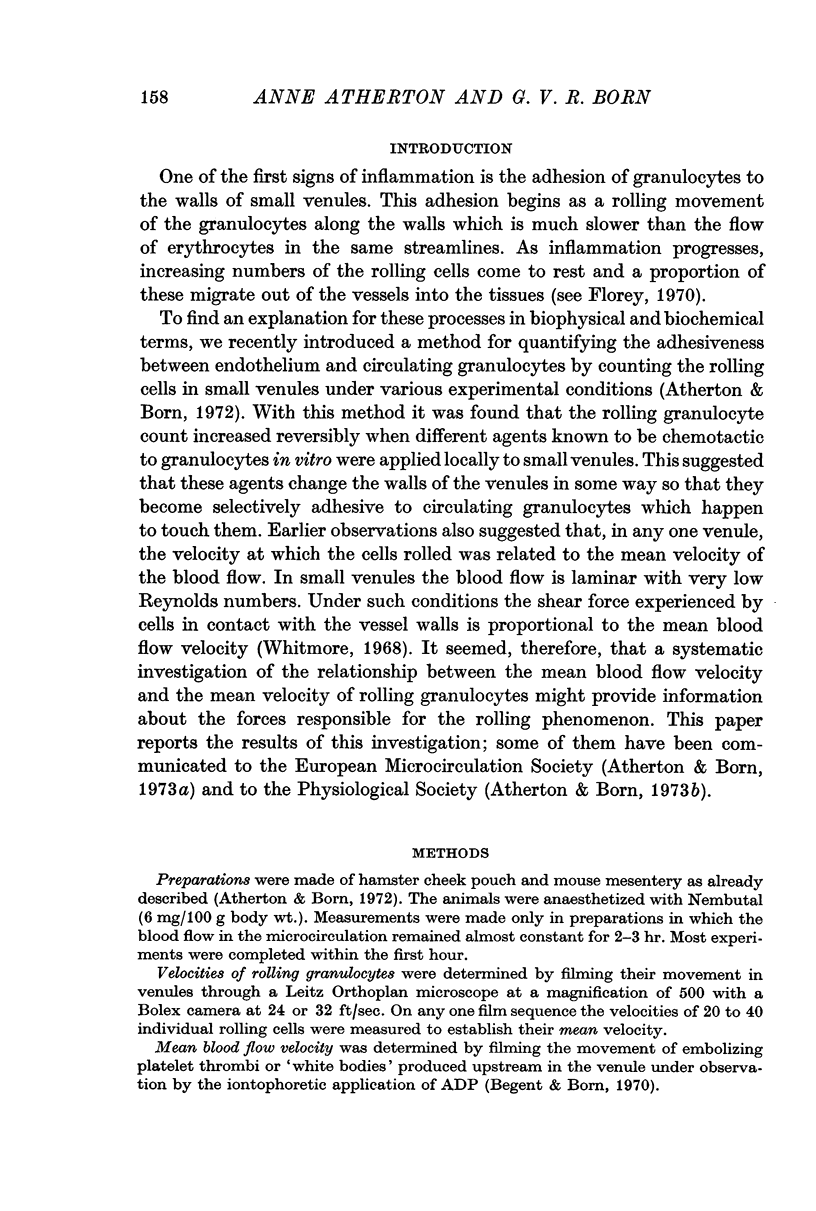
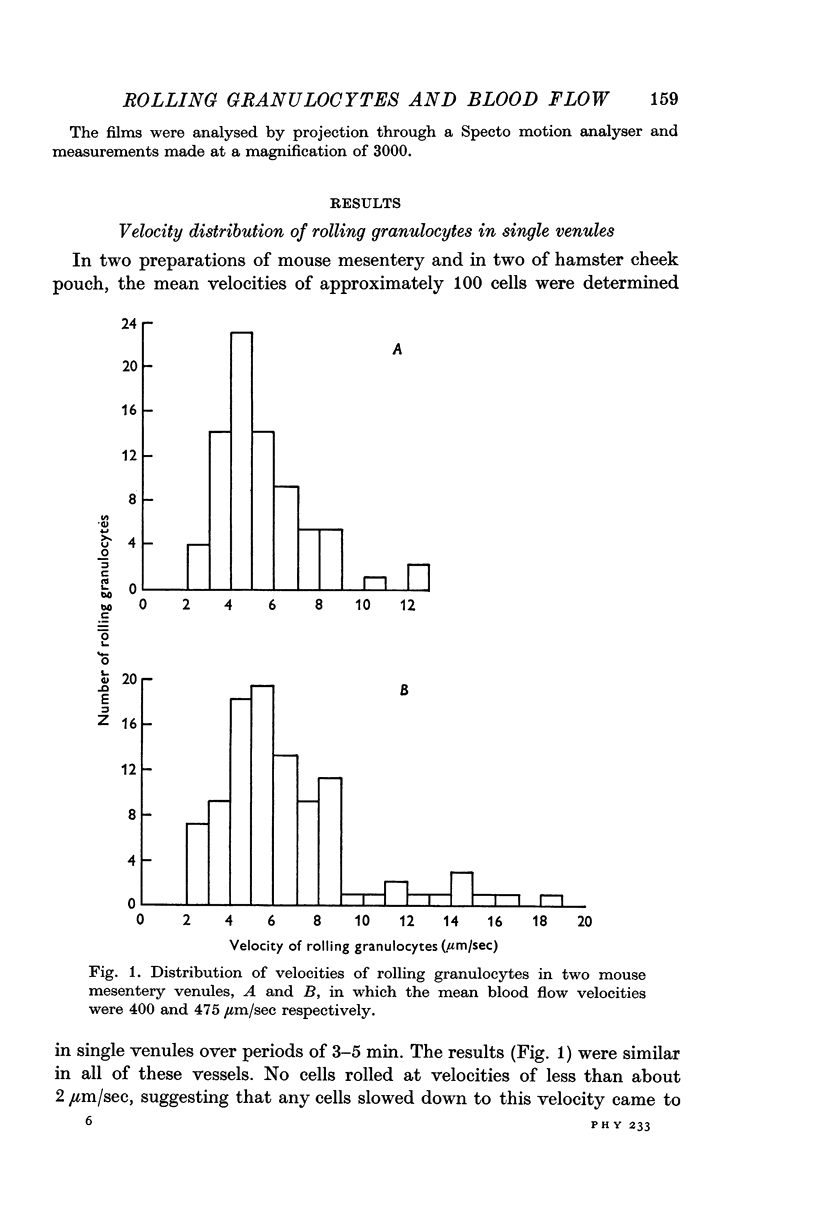
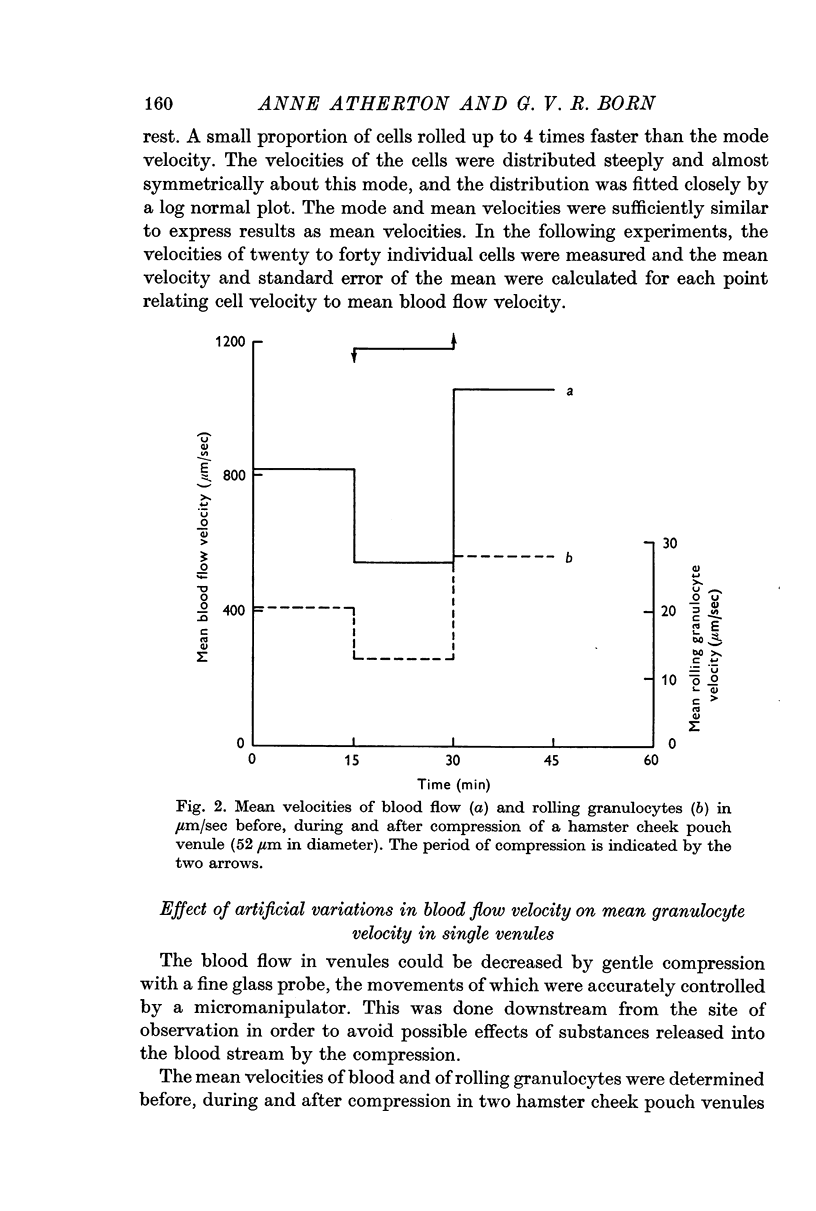
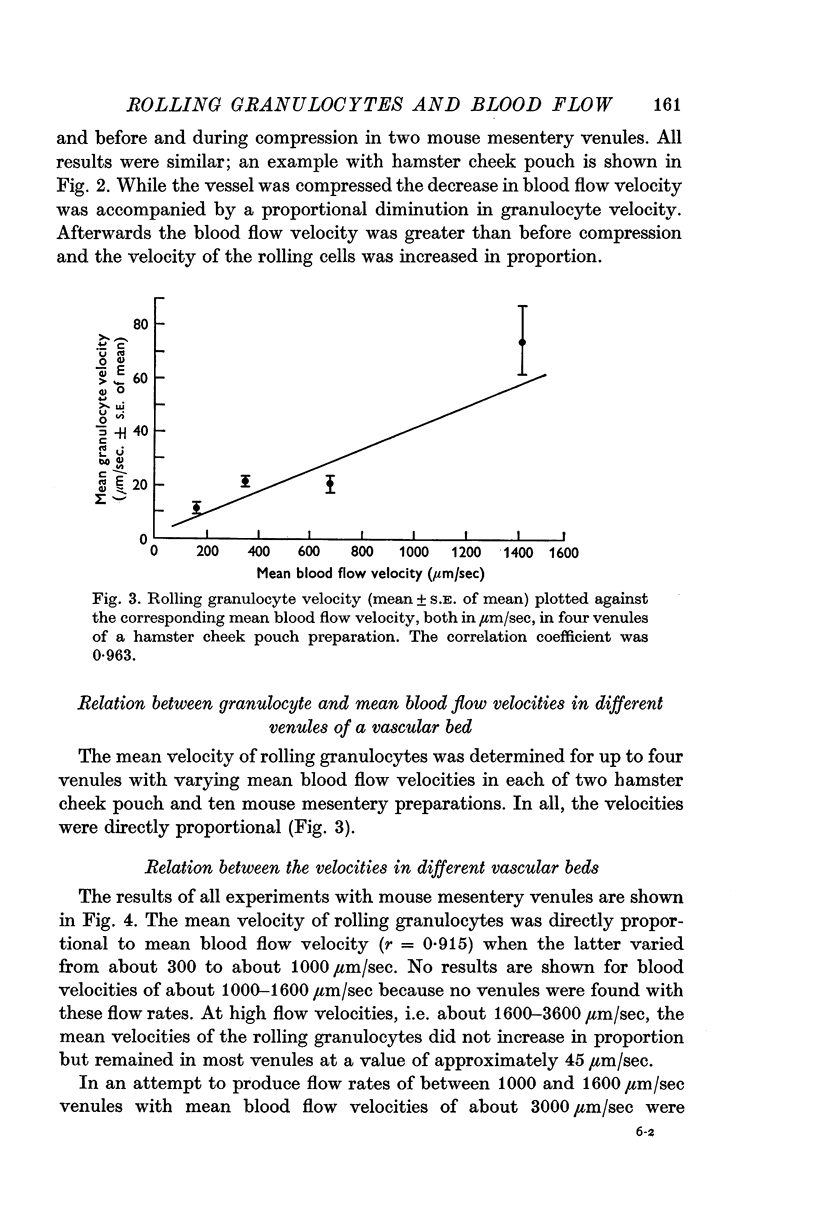
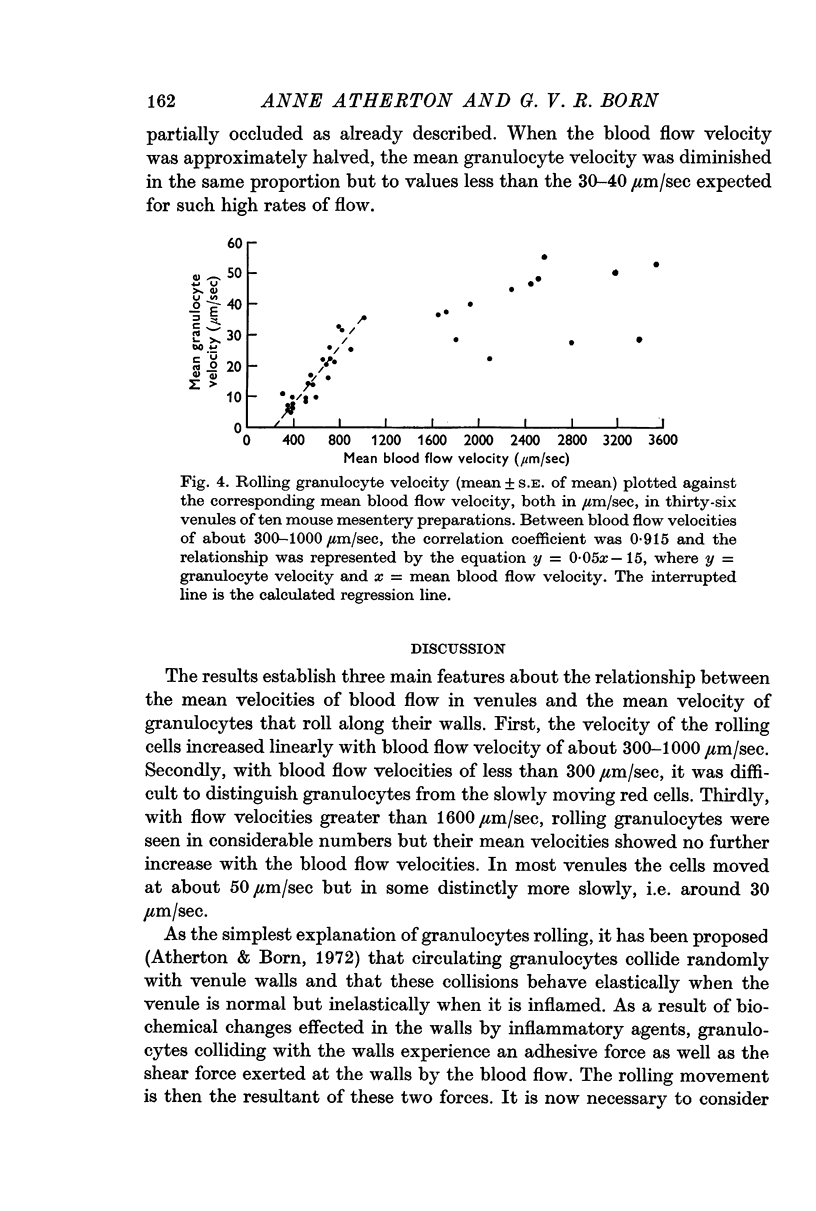
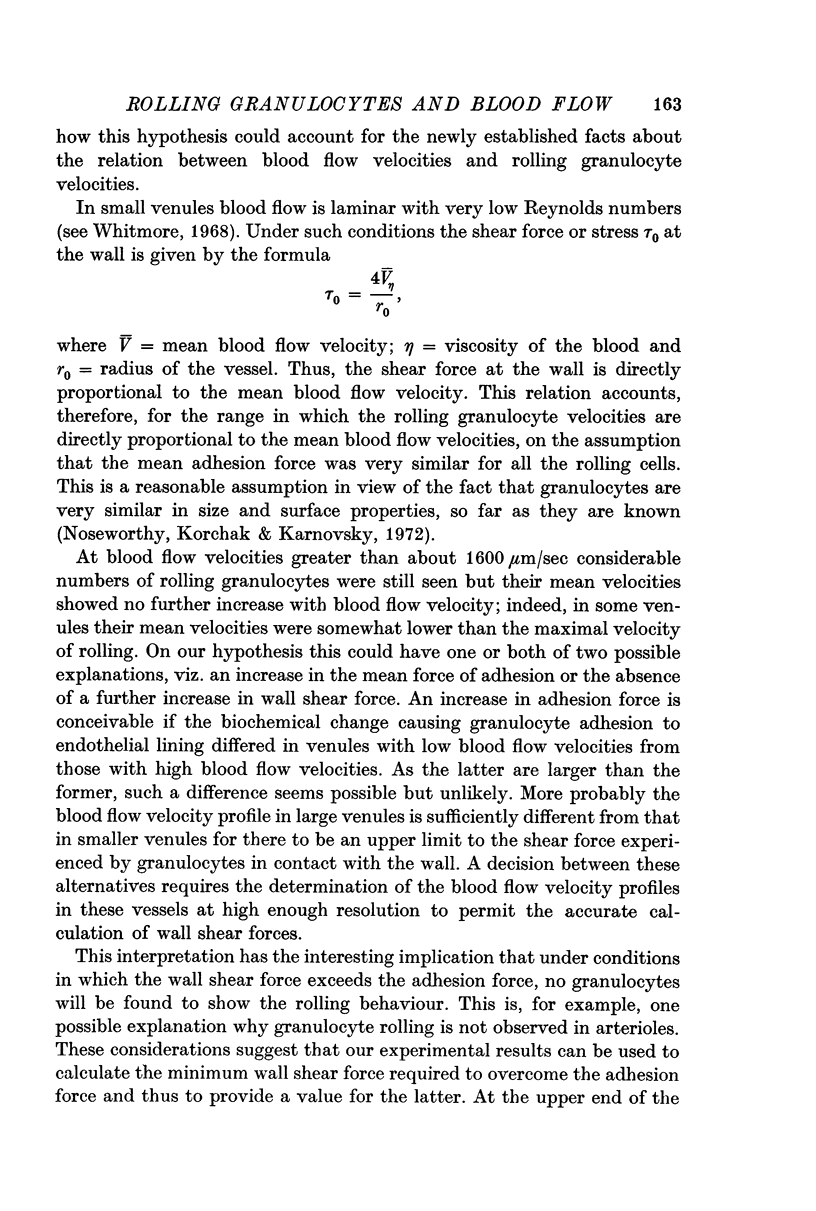
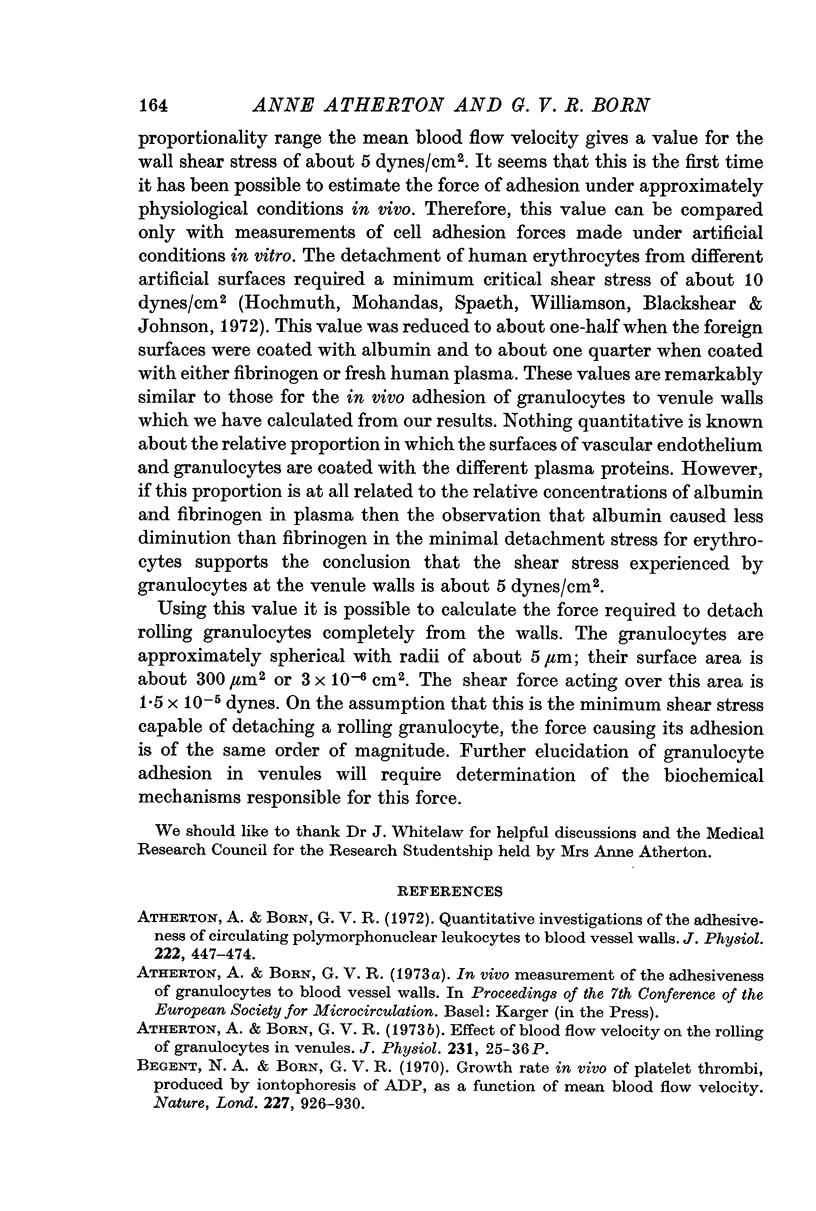
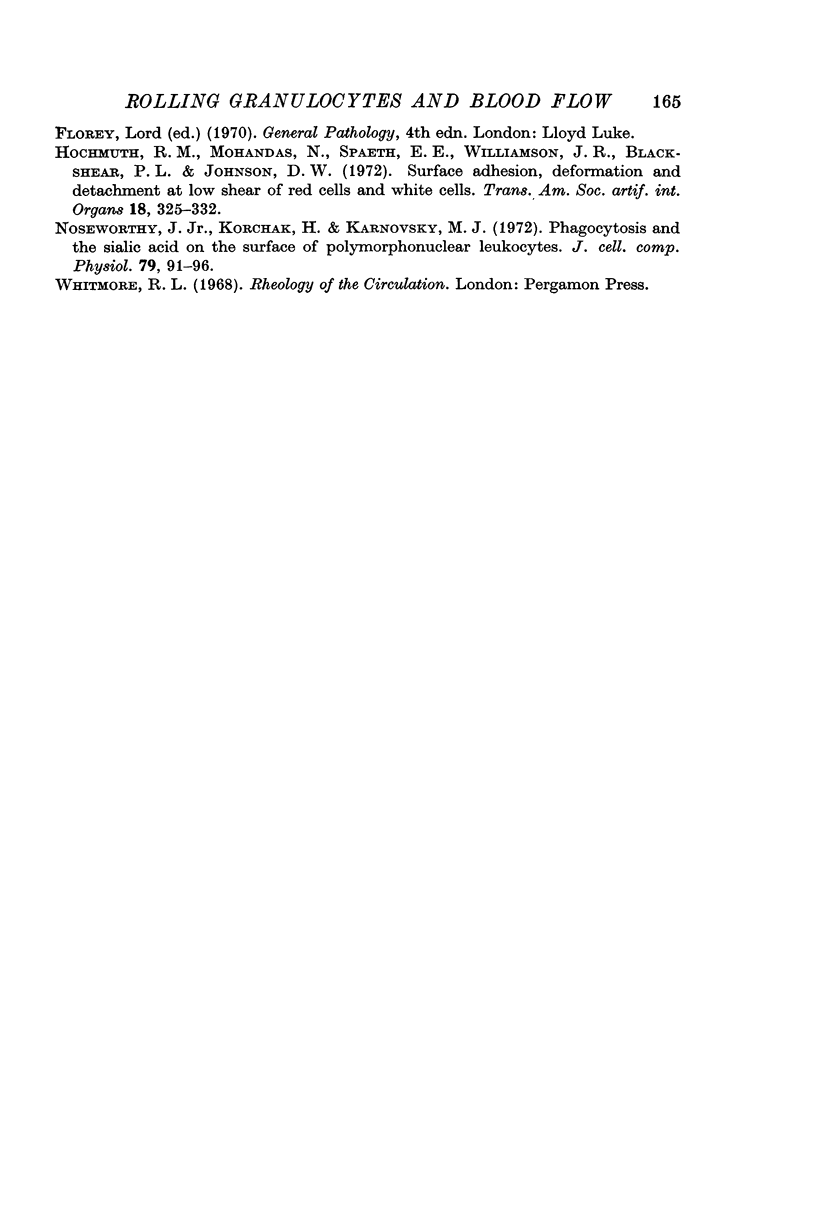
Selected References
These references are in PubMed. This may not be the complete list of references from this article.
- Atherton A., Born G. V. Quantitative investigations of the adhesiveness of circulating polymorphonuclear leucocytes to blood vessel walls. J Physiol. 1972 Apr;222(2):447–474. doi: 10.1113/jphysiol.1972.sp009808. [DOI] [PMC free article] [PubMed] [Google Scholar]
- Begent N., Born G. V. Growth rate in vivo of platelet thrombi, produced by iontophoresis of ADP, as a function of mean blood flow velocity. Nature. 1970 Aug 29;227(5261):926–930. doi: 10.1038/227926a0. [DOI] [PubMed] [Google Scholar]
- Noseworthy J., Jr, Korchak H., Karnovsky M. L. Phagocytosis and the sialic acid of the surface of polymorphonuclear leukocytes. J Cell Physiol. 1972 Feb;79(1):91–96. doi: 10.1002/jcp.1040790110. [DOI] [PubMed] [Google Scholar]


